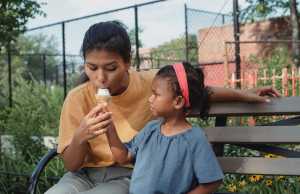
Tolerance is a learned practice.
1. Model inclusive behavior.
Until age 7, what kids hear and see from their caretakers is more important to children than what they personally experience.
Be careful with your words, even with seemingly innocent jokes or stereotypical references. Let your children see you interact positively with people from a variety of backgrounds. And when you see your children modeling that behavior by socializing and empathizing with people from a different ethnocultural group, reinforce and reward their choices.
2. Take advantage of opportunities for travel.
Challenge your worldview by exposing your family to other cultures. If foreign travel is not in your budget, there are plenty of local opportunities to achieve the same goal. Attend community festivals highlighting other nationalities, visit a different house of worship together, or watch international films. For a fun family activity, host your own International Night where you read a story about a different country, listen to music from that area and cook a native meal to enjoy.
3. Keep the conversation flowing.
Children, at a very early age, automatically notice differences between themselves and those around them. Research shows that discussing differences in appropriate ways can actually decrease future prejudices.
Feigning “colorblindness” is not the answer.
4. Get moving and volunteer.
When people engage in activities within a diverse group of their peers, bonds are built as they strive towards a shared goal and rely on each other to achieve that goal. For kids, sports teams and performing/fine arts troupes are excellent opportunities to do this.
Coordinated acts of service have also proven to build camaraderie and understanding between people of different persuasions.
5. Celebrate the differences, but don’t forget to showcase the similarities, too.
Experiencing the differences such as exotic foods, new traditions and holidays is fun, exciting and educational. This should play a large role in exposing your children to the variety of cultures and ideas found here in America, and across the globe.
Always try to balance the presentation of these differences with a lesson on a similarity. Perhaps, you focus on feelings (anticipation and excitement as you wait for a holiday) and how those feelings are experienced by ALL children. Or maybe you discuss how all people love to dance and move, and then listen to music from a different country.
Children are genetically pre-wired to notice differences, and that is perfectly normal. Our job, as caregivers, is to teach them to embrace those differences, while maintaining an equal respect for all.
Do you have any tips for teaching children tolerance? Tell us in the comments below!














